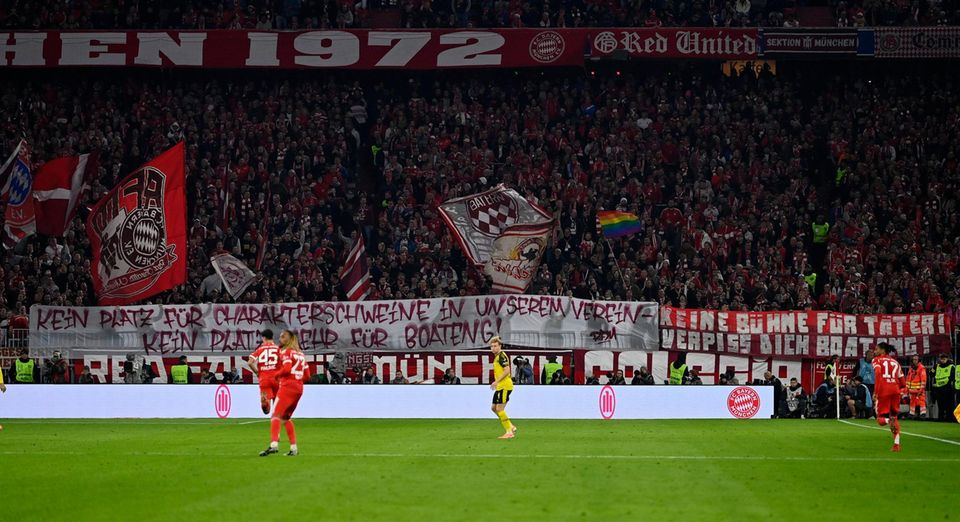(By Agustín Argento) “Los Extermineitors”, that cult film with Guillermo Francella and Emilio Disi, had an extraordinary villain who was The Red Dragon, played by the martial artist Néstor Varzé, who disappeared from the screens for several years and now reappears in “El Dragón”, a documentary about him that is part of the 24th. edition of the Buenos Aires International Independent Film Festival (Bafici).
“I met him almost 10 years ago, already at that moment I was thinking of doing something with him. Little by little I got closer to his world, his house, his things. I was one of those boys who filled the theaters to see the movies of ‘Extermineitors’, and now being in contact with El Dragón was a dream. When I decided to make a documentary, Néstor was very cautious and wanted to know exactly what I had in mind. He was removed from all that. It was a round trip that It took a few years until he agreed to film a movie again,” director Marcelo Charras explained to Télam.
The film is being screened today at 9:35 p.m. at the Cultural San Martín, on Thursday 27 at 8:40 p.m. at Cine Multiplex Monumental Lavalle and on Sunday 30 at 12:10, also at El Cultural San Martín.
Varzé was a fleeting icon of the villains of Argentine humor. His first appearance on the big screen was in “The Extermineitors” (1989) and such was the success of the film that he repeated his role in “The Extermineitors: The Dragon’s Revenge” (1991), both under the direction of Carlos Galettini.
Then he participated in the strip, in some way heir to that saga, “Brigada Cola” (Telefe, 1992-1994), in which, although the ridiculous and almost bizarre humor of the films prevailed, sexism was already beginning to be weighted from the title same of the broadcast.
However, they were not the only media appearances of the martial artist. Varzé came to the cinema after breaking several records for breaking wood and ice bars, which led him to programs like the one hosted by Gerardo Sofovich, “La Noche del Domingo”, where he showed his skill in the matter.
Also circulating on the internet is an exhibition fight to a full stadium in Mar del Plata with Héctor Echavarría, a kind of national Rambo who in “Los Extermineitors” played the hero who defeated the Red Dragon.
Charras’s film does not delve into Varzé’s five or six years of fame, but, on the contrary, takes an iconic character from the 80s to transfer him to his particular life today, in which mate, General José San Martín, a half-built house in Avellaneda and his meticulous devotion to Japan and the Samurai and karate culture.
The film, of an observational nature, captures the rigor and discipline that Varzé has to live by. Strict in his diet and in his training routine, his body is pure fiber and, at 63, he continues to strengthen his bones by hitting hard objects, such as wood, iron or stones. She gives karate classes, women’s gymnastics, nutrition courses and makes samurai armor.
“He seems like a character from another era,” Charras explained, “a stoic who lives his life according to ancient codes of honor, as well as being a kind of suburban samurai, but not in a purely recreational sense, but in a real, philosophical sense. A a great character, in short, which is what I usually look for in this type of film”.
Varzé today lives in Córdoba (where his daughter lives) and remains very active on social networks. He can be seen on Facebook and Instagram explaining martial arts techniques, as well as doing live broadcasts on Sundays under the title “Drinking mate with El Dragón”, in which he is dispatched answering questions from friends, students and fans. He continues to teach, dedicating his life to karate, an art that he has practiced for 50 years.
Télam: Why did you decide to make the record observational, without any statement on camera?
Marcelo Charras: At the beginning of the project, some interviews with him were contemplated, especially so that he could talk about his past, beyond filming him in his day-to-day life. But when we started working on it I quickly discarded that idea. I realized that this more rigorous observational record accentuated his loneliness, gave the film more climate. He didn’t need to add or explain anything. Everything he wanted to tell was there in the images.
T:: Although there are clear references to “Los Extermineitors”, the film is more about Néstor’s present day than about his famous past. Because?
MC: Because I prefer portraits in the present tense. In all my films (“La Pa en Buenos Aires”, “Maytland” and “Memoria de la Sangre”) the past of the characters plays a fundamental role, but it must appear tangentially, due to few indications, the viewer is the one who knows it. it has to be unveiling and assembling.
T: How did you think of this coexistence -a priori bizarre- between a house with half-built parts, a horse, faded tiles, with the almost obsessive thoroughness with which you study and work on Japanese culture and the life of San Martín?
MC: That house, with everything that is there, like each of Néstor’s aspects and activities, are part of who he is, of his history. One could know it just by walking through those rooms, looking carefully at the details. When I discovered his house, I understood that the movie was in there, and that’s why we go to another place in just a few scenes.
Source: Ambito
I am an author and journalist who has worked in the entertainment industry for over a decade. I currently work as a news editor at a major news website, and my focus is on covering the latest trends in entertainment. I also write occasional pieces for other outlets, and have authored two books about the entertainment industry.




